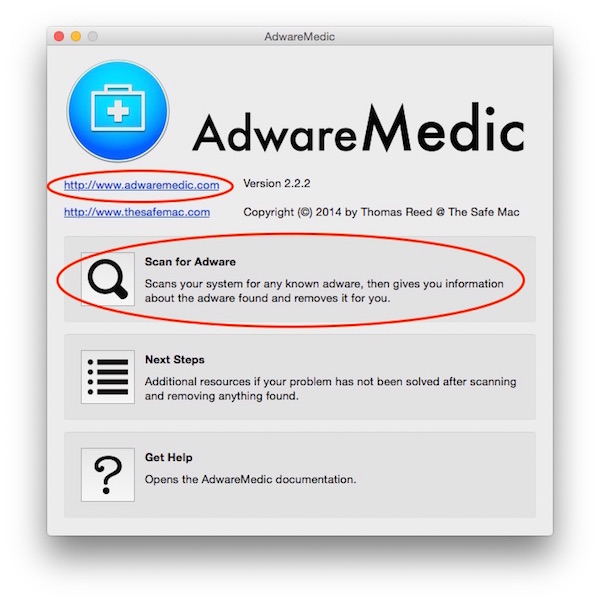
(Leer este post en Español haciendo click aquí)
If you have problems with your Safari application and you try to restore your Yosemite’s Safari app, maybe you will get crazy so soon. Restore option is not found among all Safari options. Why? Where is it? Maybe Apple has the answer, but we can’t find it. Anyway, we will survive and if you need to restore Safari, for example due to a slow speed or other issues, just «listen» carefully to this tutorial which takes you by 3 different ways to restore Safari with Yosemite.
Índice
If you have problems with your browser, learn how to restore Safari with Yosemite
I have for you 3 ways to restore Safari when Mac OS X Yosemite is ruling your Mac…. You should try first way #1, and if problem persist just go to way #2… because last one, way #3, is the heaviest way to restore it…. just take note!!
· Way #1
Now, if you look inside Safari’s main options, you won’t see any item named ‘Restore Safari’ as seen before. Apple has removed it. We don’t know why, but we have a «new» and simple item among Safari’s options which seems to be requested to restore your Safari application.
Open your damaged or slow Safari application and just click on ‘Safari’ menu in the Mac’s main menus bar… look at next picture.

Now you’ll find so quickly an item titled ‘Clear History and Website Data‘ among all menu options. According to Apple, this is the new ‘Restore‘ action in Yosemite’s Safari app. Ok, so then just click on it to «restore» it.
You’ll be asked to confirm what you want exactly to clear on your Safari history. Choose your own option, but perhaps you should click on ‘all history’ to be sure about restoring.

I’ve just done it and sincerely I don’t believe this action was good to restore my Safari app… Do you think so?
You can do one more thing before come away. Just open Safari Preferences by hitting down ⌘ , (command and , keys) and click on ‘Privacy‘ tab. You will find a button with a ‘Remove All Website Data…‘ text label. Ok, just be sure about what you are going to do at this moment, and hit this button down to remove that kind of data.

But, I’m sure that you are not full happy with this way… and because of this I’ll write you another one more thing to do before to go to way #2…
Open Safari preferences (if it’s already closed) and click on ‘Advanced‘ tab. You will see a checkbox (Show develop menu) at the bottom of the window… just click on it to validate checkbox. It means that you’ll get a developer sub-menu in Mac OS main menu bar…

Now, look into Safari’s menu bar to find new ‘Develop‘ sub-menu. Have you found it? Good… Now just click on ‘Empty Caches‘.

Using this action you have removed all possible data in your Mac’s web browser cache memories, maybe it is enough for your Safari issue, if not, try next way too.
It’s good for you to restart Safari on every change you apply. Just do it, restart Safari and check its functioning. Be sure to ‘quit‘ (and not only to close its window) Safari and run it again.
If you still have problems please, don’t panic and go to way #2.
· Way #2
Please make previous step (way #1) before making way #2. It is recommended.
This way is a big step and it means to, almost, destroy your Safari app copy. Why? Because now I recommend you to remove all extensions installed in your Safari (Don’t forget to remember and keep them if you want to recover them more later).Extensions are applications made by other developers which live in your Safari app. Maybe your problem is caused by malware or Adware (Advertisement) downloaded by the internet (sure being unconscious) through these extensions. And what I propose to you now is to remove all extensions and to check its kept data in your Mac using a free scanning and repairing app.
To remove your Safari extensions, just open Safari and open also preferences by hitting down ⌘, (command and , keys) and click on ‘Extensions’ tab. You can turn off them by switching the on/off selector. But it’s better to remove them totally. Just do it. I don’t have any extension in this moment in my Safari app, but you will be able to turn them off and remove them. Just remove them.

Now, to be sure about extensions danger on your Mac, just download this app for free (you can donate) ‘AdWareMedic‘ and run it (www.adwaremedic.com). It’s made for Mac and it will scans your computer and it will remove adware from your Mac with your permission. Just follow on screen instructions.

Now, you should check your Safari application again (re-start it properly and try it). If problem has been solved, then you could install again all your extensions as well. I recommend you to install brand new extensions copies and to avoid old ones. If your problem persists and it hasn’t been solved, then, forget everything and go to next way.
· Way #3:
This is most dramatic way. Yes, it is about to remove your Safari application from your Mac and to install a new one into it. Take care about this way.
Before to start this killer way, take note of your current Safari version (Go to main ‘Safari’ menu in Mac OS X menu bar and click on ‘About Safari’). Check your Safari’s version ant take note of it if needed.

Be so sure to keep close to you a brand new, and non-damaged, Safari app (for Mac) copy. If you have a friend with a Mac (ask him/her for his/her a favour to copy Safari), or maybe you can get it by downloading it from internet or others (please, use only safe sites) or copying it from another Mac of yourself… Anyway just copy a new and non-damaged ‘Safari.app’ (for Mac) into a USB flash drive and keep it close to you. (I’ve said USB drive, but you can use any way you like to move new Safari.app from another Mac or site to your Mac).
Remember to check software version of the new Safari copy you’ve got. Yosemite’s Safari latest version is on 8.0.5 (today’s post date). Try to get same version for your new Safari.app copy.
Are your ready and prepared for this? First, be sure that you can remove your Safari App. Check history and others. If needed, just export and save your ‘Bookmarks’, ‘Favourites sites’, etc… to a safety location folder into your Mac.
If you need to export bookmarks, just click on ‘File’ menu in Mac OS X menu bar and reach item ‘Export Bookmarks…’. Do click on it and export them.

Let’s go. You can use ‘Clean my Mac‘ or similar apps to remove Safari from your Mac. But remember that we are Mac users and we can do it our way.
Then, forget any removing-app and just find Safari.app by searching it into this location: Finder>Applications>Safari.app and just keep it selected when found.

And now, just get info about Safari. Just hit down ⌘ i (‘command’ and ‘i’ keys at the same time) or just right-click on Safari.app file to see contextual menu, and just click on ‘Get Info‘.

You will get Safari’s info window as you see at previous picture. What we are now requested to do is to allow (give permission to) ‘everyone’ and ‘system’ to have permission to remove this system application. If you try to remove it without allowing permission, you won’t be able to do it because this app is protected by Mac OS X.
Click on tiny padlock icon placed at info window right-bottom side (If needed). With this, you are going to authenticate yourself to change permissions for Safari app as Mac’s administrator. Just type your administrator password and set ‘everyone’ and ‘system’ as ‘Read & Write’. Fix your sight into red square and little red circle at previous picture to find where to set it.
If everything has been right, now you can close Safari ‘info’ window, select again Safari.app at your Applications folder and just right-click again…. Look for ‘Move To Trash‘, click on it and ‘throw’ your damaged Safari copy to trash (Or just select Safari file and hit down ⌘ ⌫ keys, this is command + delete backwards keys to send file to trash directly).

You should to remember to remove also Safari icon at dock (if exists) by dragging it to your desktop empty area. Is it all well done?
In this moment you don’t have Safari in your Mac…. Do you have a non-damaged copy with you? Drag it to your Mac and/or move new Safari.app to your Applications folder and run it. Remember to use ‘keep in dock’ option if you want it for dock Safari icon.
Done, you have restored your Safari application copy.














